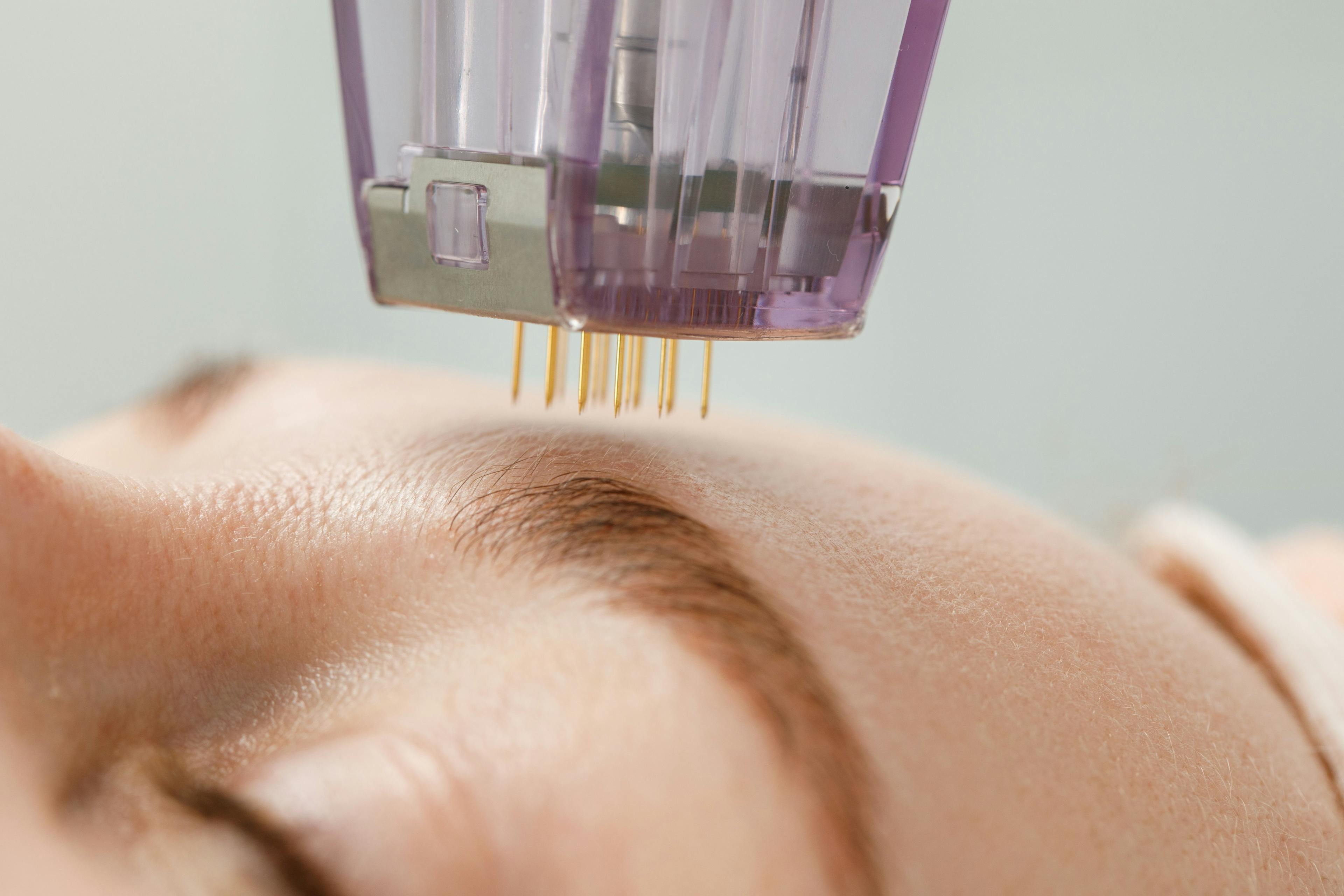- Acne
- Actinic Keratosis
- Aesthetics
- Alopecia
- Atopic Dermatitis
- Buy-and-Bill
- COVID-19
- Case-Based Roundtable
- Chronic Hand Eczema
- Chronic Spontaneous Urticaria
- Drug Watch
- Eczema
- General Dermatology
- Hidradenitis Suppurativa
- Melasma
- NP and PA
- Pediatric Dermatology
- Pigmentary Disorders
- Practice Management
- Precision Medicine and Biologics
- Prurigo Nodularis
- Psoriasis
- Psoriatic Arthritis
- Rare Disease
- Rosacea
- Skin Cancer
- Vitiligo
- Wound Care
News
Article
Dermatology Times
Bunick Busts 10 Myths On Boxed Warnings
There is a lot of conversation drumming around the boxed warnings for newer JAK inhibitors, and fact versus fiction was discussed at Fall Clinical.
Boxed warnings are a hot topic of conversation in the dermatology space. Christopher Bunick, MD, PhD, associate professor at Yale School of Medicine, and Dermatology Times Editorial Advisory Board member, dispelled common myths during the session “Boxed Warnings: What Do They Really Mean To You?” at the 2023 Fall Clinical Dermatology Conference in Las Vegas, Nevada October 19-22.1
“This is a really important issue because many dermatologists are struggling with how to use box warning medications, in particular, the newer JAK inhibitors that have received box warnings, both topically and oral Jak inhibitors.”
Myth 1: Boxed warnings are not rooted in federal law.
Fact: Boxed warnings are described in the US Code of Federal Regulations (CFR) under “Warnings (21CFR 201.57 (e).” The code specifies that labeling should describe serious adverse events (AE) and potential safety hazards, limitations in use, and steps to take if they occur. Boxed warnings are based on clinical data. Serious animal toxicity can also serve as grounds for a black box warning when clinical data is not available.2
Myth 2: Boxed warnings are issued only after a casual relationship has been established.
Fact: The code goes on to say that, “Labeling shall be revised to include a warning as soon as there is reasonable evidence of an association of a serious hazard with a drug; a casual relationship need not have been proved.”2
Myth 3: A drug with a boxed warning should not be used.
Fact: There are 4 main situations where the FDA applies a boxed warning, and it is not meant to deter use, but as a consideration. These include when an AE is so serious that it may outweigh treatment benefits, when there are prescribing considerations such as lab monitoring and suitable patient selection, a drug is approved with mandatory restrictions or guidelines for safe use, or unspecified circumstances where there could be an anticipated AE.2
Myth 4: FDA application of boxed warnings is decreasing.
Fact: Between 1975-1999, the FDA approved 548 new drugs. By 2000, 45 of those drugs had at least 1 boxed warning and 16 were withdrawn from the market. Between 1997-2009, 219 new drugs were submitted to the FDA’s Center for Drug Evaluation and Research. By 2016, 30 of the 219 had at least 1 boxed warning and 11 were withdrawn from the market.3
Bunick also mentioned that biologics are slightly more likely to have a post-marketing safety event. He also cited a study indicating that psychiatry drugs are more likely to have a post-marketing safety event over dermatology drugs.3
Myth 5: Medications with a boxed warning cannot be distributed over the counter.
Fact: Bunick asked session attendees when the last time they used ibuprofen was. Ibuprofen has a boxed warning consisting of cardiovascular thrombotic events and gastrointestinal risk.
Myth 6: Dermatologists are inexperienced handling medicines with boxed warnings.
Fact: More than 50 drugs used in dermatologic care have a boxed warning, including TNF-alpha inhibitors, isotretinoin retinoids, botulinum toxins, antimicrobials, and immunosuppressives.4
Myth 7: Application of boxed warnings is always logical and consistent.
Fact: The FDA applied boxed warnings to topical ruxolitinib, but not oral ruxolitinib.
Myth 8: JAK inhibitors are more dangerous on average compared to commonly used immunosuppressive therapies.
Fact: JAK inhibitors are safer than traditional systemic immunosuppressives. Bunick was an investigator in a study that found that the JAK inhibitors tended to be safer than systemic agents that clinicians do not think twice about using for severe atopic dermatitis patients such as methotrexate, cyclosporine, and oral steroids like prednisone. In fact, oral prednisone, which does not have a box warning, had some of the highest rates of adverse effects.5
Myth 9: Oral corticosteroids/prednisone have a boxed warning.
Fact: Oral corticosteroids/prednisone do not have a boxed warning.
Myth 10: Dermatologists should be afraid of using medicines with a boxed warning.
Fact: Dermatologists should not be afraid of using medicines with a boxed warning. There are certain parameters where a clinician needs to monitor a patient at a recommended frequency depending on a wealth of factors including pregnancy, required lipid panels, hepatitis, and HIV.
“It was really a lot of fun to be able to tackle these myths around box warnings and to help my colleagues feel comfortable using medications with such box warnings,” Bunick told Dermatology Times. “These boxed warnings that medications have in dermatology, first, they're common. And a lot of the myths that go around with box warnings simply aren't true.”
References
1. Bunick C. Boxed Warnings: What Do They Really Mean To You?. Presented at: 2023 Fall Clinical Dermatology Conference: October 19-22, 2023; Las Vegas, NV.
2. Murphy S, Roberts R. "Black box" 101: How the Food and Drug Administration evaluates, communicates, and manages drug benefit/risk. J Allergy Clin Immunol. 2006;117(1):34-39. doi:10.1016/j.jaci.2005.10.031
3. Winterfield L, Vleugels RA, Park KK. The Value of the Black Box Warning in Dermatology. J Drugs Dermatol. 2015;14(7):660-666.
4. O'Connor NR. FDA boxed warnings: how to prescribe drugs safely. Am Fam Physician. 2010;81(3):298-303.
5. Daniele S, Bunick C. JAK Inhibitor Safety Compared to Traditional Systemic Immunosuppressive Therapies. J Drugs Dermatol. 2022;21(12):1298-1303. doi:10.36849/JDD.7187

Newsletter
Like what you’re reading? Subscribe to Dermatology Times for weekly updates on therapies, innovations, and real-world practice tips.






























